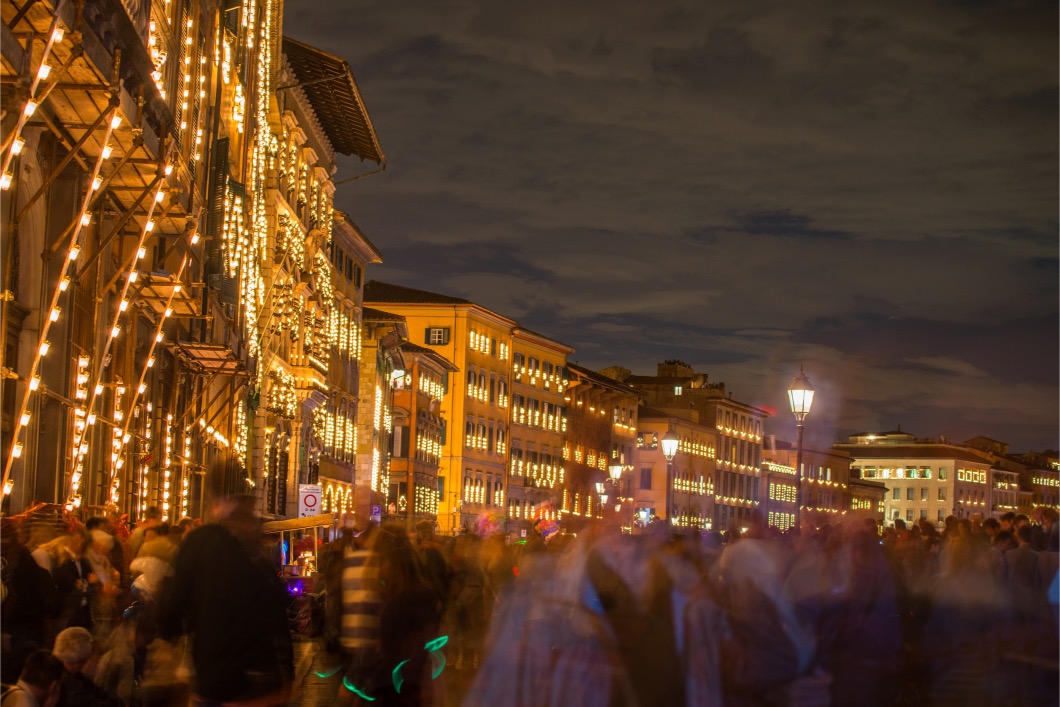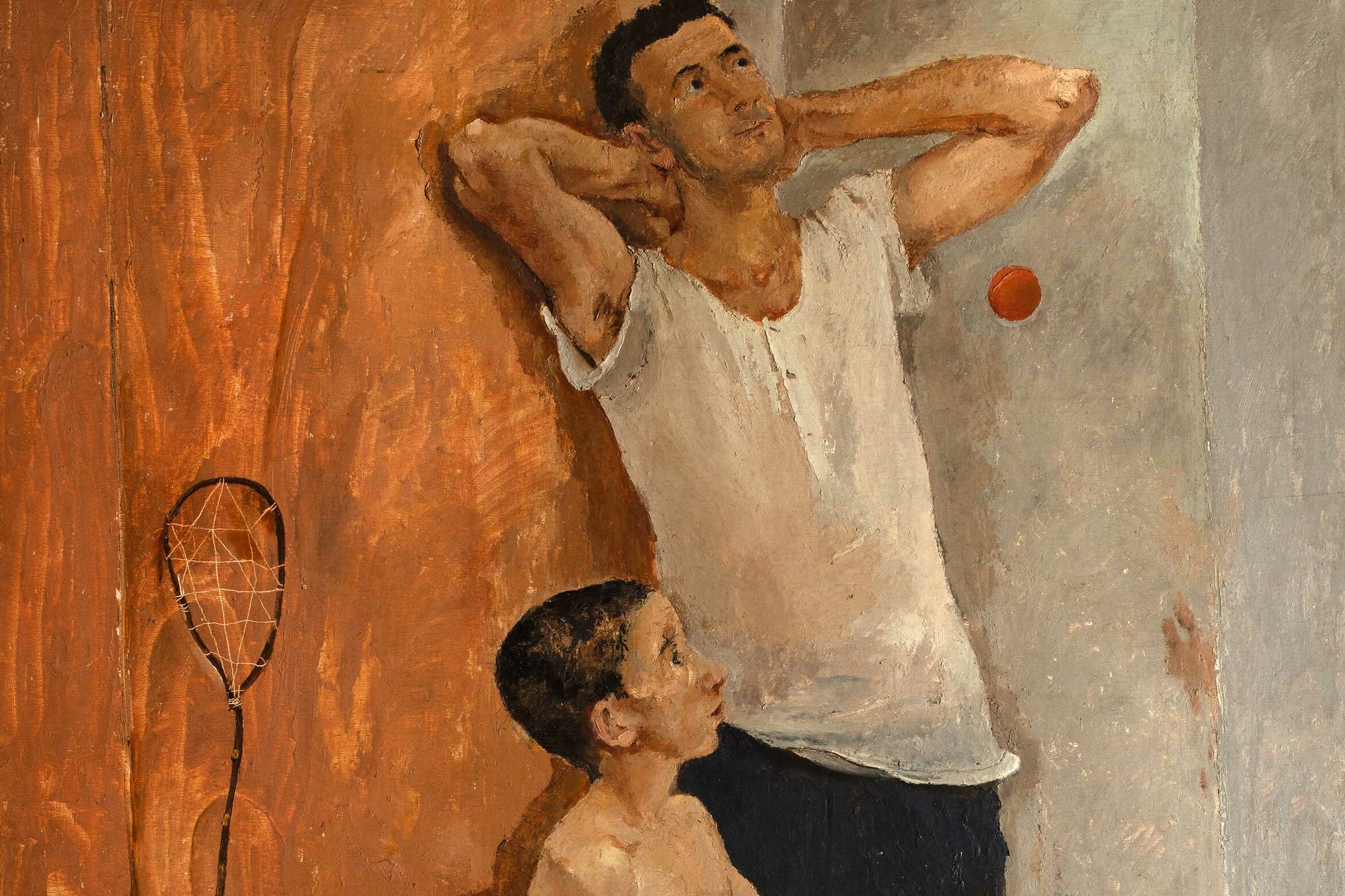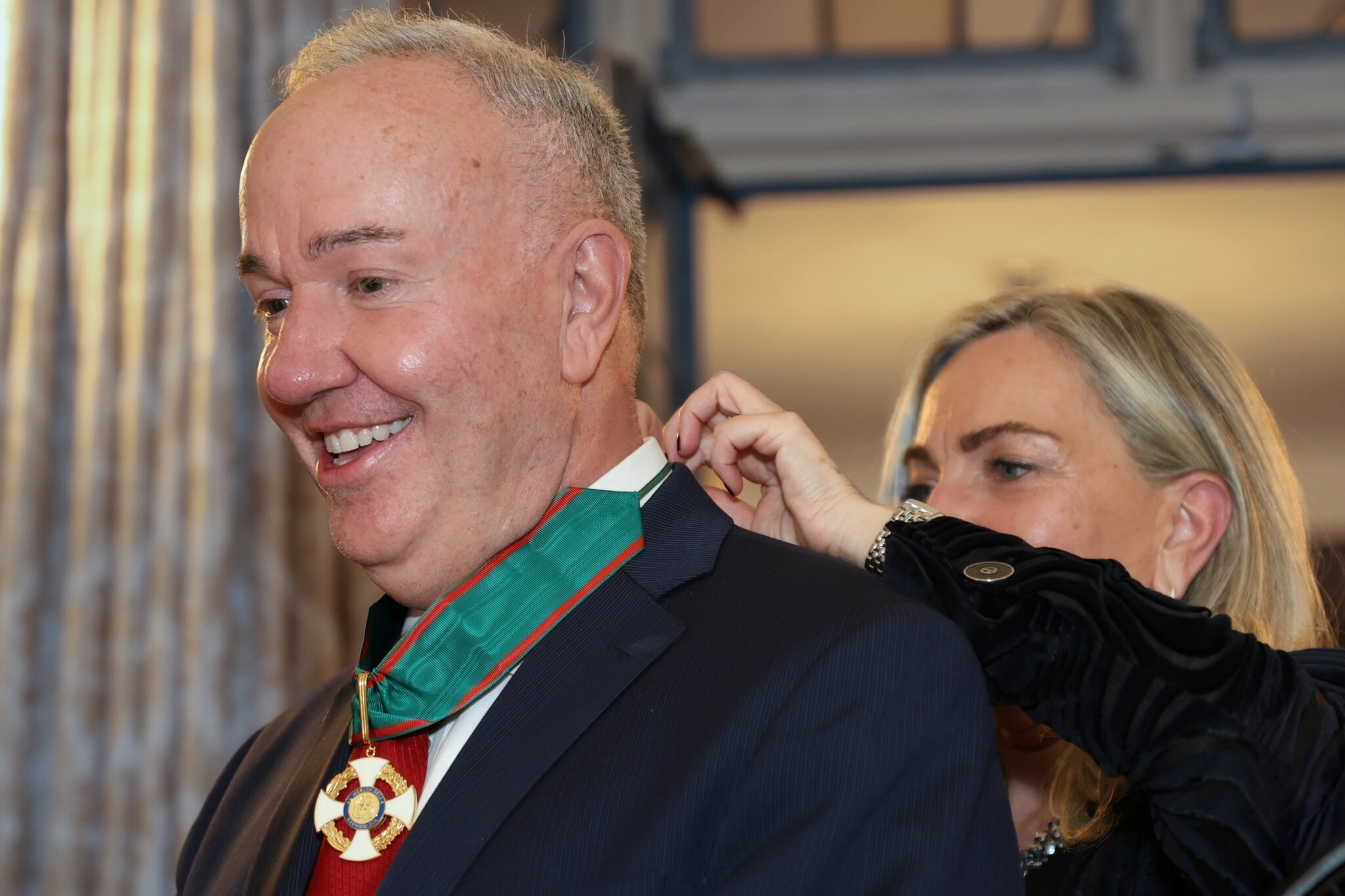Italian figurative artist, Alberto Burri (Città di Castello, province of Perugia, Umbria 1915 – Nice, France 1995), took a degree in Medicine and served as a military doctor for Italy’s Army during WWII.
Painting started as a mere pastime, during his internment at the war camp in Hereford, Texas, and, eventually, turned into his full-time career, once he returned to Italy.
Burri – who, since 1963, spent every winter with his wife under the warm sun of Los Angeles’ Hollywood Hills for almost thirty years – was deeply inspired by Death Valley’s timeless and primitive landscapes.
Forty years ago, Burri donated one of his monumental works with his trademark cracks, Grande Cretto Nero, to the Franklin D. Murphy Sculpture Garden, at UCLA campus, and symbolically to the geographical area that had inspired him.
By a curious coincidence, forty years ago, filmmaker Giuseppe Sterparelli was born in the same town, Città di Castello, where the avant-garde master came from.
On January 9th, the world premiere of Sterparelli’s short film, Variazioni. A Visual Polyphony – a multimedia exploration of fire as a connective primordial element that tied Burri to poet Emilio Villa – officially kicked off the symposium BURRI PROMETHEIA, that UCLA Department of Italian and the Italian Cultural Institute of L.A. jointly put together, in commemoration of the fortieth anniversary of the meaningful gift by Burri.
I’ve had the chance to have a chat with Giuseppe about this unusual and fascinating project.

Please, introduce yourself. What’s your cultural background? What are your previous artistic experiences?
I was born forty years ago, in Città di Castello, in the province of Perugia, Umbria. This Italian town with its rich artistic heritage has certainly infused a creative spirit in me.
I have supervised several cultural projects, particularly in the art history arena, but I’ve always combined the intellectual investigation with a more straightforward approach, able to awaken people’s interest.
I’ve applied this method in a project on Luca Signorelli, Italian Renaissance painter who inspired Raphael himself, in Città di Castello, as well as in the case of artistic expressions more “pop”, the likes of Street Art and Post-Surrealism.
Tell us more about the genesis of your short, Variazioni. A Visual Polyphony. How did you get fascinated by the idea of combining poetry, music, figurative art and cinema?
The idea behind Variazioni was to tell an untold story – even shrouded in mystery – that occurred in figurative artist, Alberto Burri’s life. That is, the small book by poet Emilio Villa, printed out in 1955, in less than one hundred copies by a small print shop.
It is a visionary poem with a very strong reference to images. Indeed, Burri illustrated some print copies with his original works, among which also his first “combustions” on paper.
My short is an attempt to turn those words and images into something even more alive and captivating, through multimedia, 4K technology, and poetry reading in a voiceover combined with electronic music.
The underlying theme of the eternal cycle of life, death and regeneration was relevant to both artist Alberto Burri and poet Emilio Villa. In what way is this philosophical investigation relevant to you?
Both Burri and Villa shared the same philosophy, motivated by their independence, almost “ethical,” from cultural trends and the market. To both of them, an artwork had an existential meaning, and could not be deemed “commodity,” but rather moral expression.
Burri rediscovers beauty in the poorest and most worn-out materials (woods, metals, textiles) and makes constructive (not destructive) the element of fire.
Villa, fearless in the face of the unknown, makes a similar rediscovery with words, combining modern languages with dead ones.
I like how you executed in your short the dialogue between dead languages and living ones, with the aid of three voice actors. Please, elaborate on that.
Burri’s artistic creations, as well as Villa’s poetry, seem to be independent from any time reference, they are simultaneously primitive (for instance, fire for Burri, Sumerian for Villa) and very current.
The idea to set the film in the Death Valley, is not only due to the fact that Burri himself was inspired in the realization of his Cretti (“Cracks”) by it, but also because it is a landscape stuck in time, never changing, despite millions of years have gone by.
The three voiceover in the film belong to a man, a woman and a child. At the same time, they represent the three human ages, to underline the cyclic element of concurrent completeness and diversity.
To what extent your trips to the Death Valley did inspire you for this project?
Death Valley, with its Badwater Basin – the point of the lowest elevation in North America – its mountains sculpted by wind at Zabriskie Point – as in the film of the same name by Italian director, Michelangelo Antonioni – and its Ubehebe Crater – sacred to the Native Americans – contributed to reinforce my film’s message, as well as its tie with Burri’s radical and very suggestive artworks.
How did it start your collaboration with awarded cinematographer, Lisa Rinzler, and what did she bring to your work?
I had seen Lisa Rinzler’s visual work in Ed Harris’, Pollock (2000), and read about her early studies in painting and visual arts at the New York Tisch School of the Arts, so when I turned to her, I had no doubt that she was the right fit. Her willingness to work in an indie project sealed the deal.
She was also very familiar with Burri’s artworks and I believe her end result derives from being deeply in sync with the suspended and rarefied atmosphere of the desert valley stretched between California and Nevada.
Your “Visual Polyphony” is not only visually but also musically experimental. What made composer Federico Visi stand out to you?
Federico Visi is an Italian composer, sound designer, researcher, with specialization at the Interdisciplinary Centre for Computer Music Research (ICCMR), Plymouth University.
Burri’s art collections in Città di Castello influenced him deeply. At the same time, his musical versatility and expertise – spanning from electronic and experimental projects to more classical ones (including rock) – enabled him to enhance both the actors’ voices and Villa’s “multicolored” verses.
You premiered your short, Variazioni. A Visual Poliphony, at UCLA, and talked about your work at the IIC. How were the two experiences and the reception from the audience?
I am very happy with the audience’s reception, but, above all, with having presented the short as part of the symposium on the “Grande Cretto Nero,” which Alberto Burri donated to UCLA forty years ago.
Among the public, there were artists, poets, critics and producers, but I feel the biggest gratitude for Professor Thomas Harrison, Chair of the Department of Italian at UCLA, who never stopped believing in this project, and for Valeria Rumori, Director of Italian Cultural Institute in L.A., who immediately embraced the idea of celebrating Burri in the city that was the artist’s second home.
Are you planning to work again in Los Angeles in the near future?
Los Angeles – an actual melting pot that combines serenity with energy – has immediately struck a chord with me for its great cultural and artistic openness, now more dynamic than in the past.
I have true friends here and I’d love to keep in touch with the local cultural institutions and the city itself, to tell new untold stories and form new bridges between Italy and the United States.





























